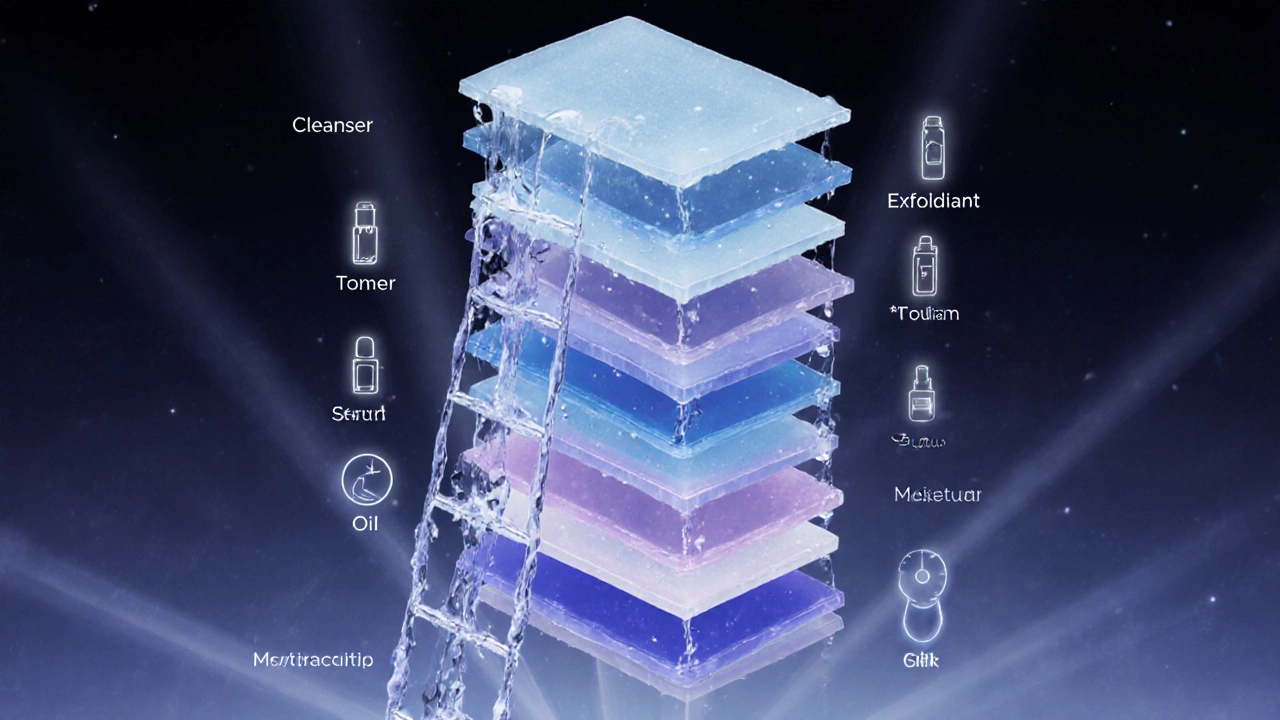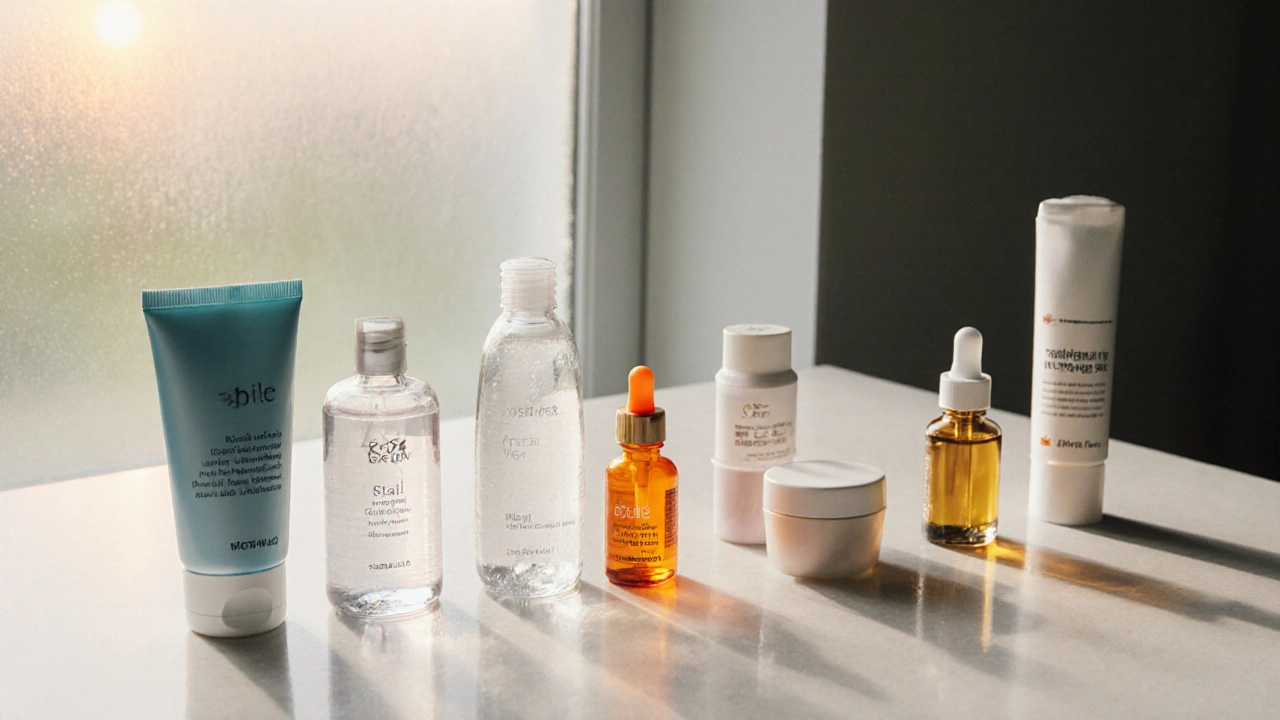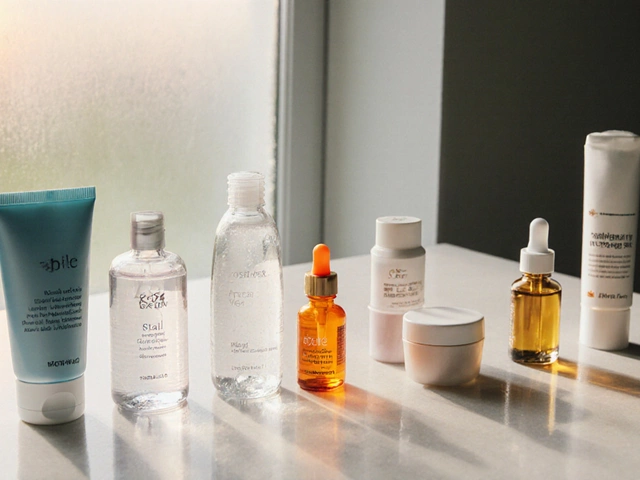Skin Care Routine Order Checker
Check Your Routine Order
Select your AM/PM routine steps to see if they're in the correct order. The tool will highlight potential issues and suggest improvements.
Key Takeaways
- Start with a clean canvas - cleanser comes first.
- Use exfoliants sparingly and only after cleansing.
- Toner balances pH and preps skin for actives.
- Layer serums from thinnest to thickest texture.
- Lock moisture in with moisturizer before finishing with sunscreen in the morning.
Getting the skin care routine order right can transform your complexion and make every product work harder. Below is a no‑fluff walkthrough that tells you exactly which step belongs where, whether it’s a busy weekday or a weekend spa‑like session.
Skin care routine is a series of targeted steps designed to clean, protect, and nourish the skin. By following a logical sequence, you prevent product clash, maximize absorption, and avoid common pitfalls like over‑exfoliation or diluted actives.
Why Order Matters
Think of your face as a sponge. If you soak it in water before squeezing out the excess, the sponge can’t absorb anything else. The same principle applies to skin. Applying a heavy cream before a watery serum will trap the serum on the surface, leaving it ineffective. Each layer should build on the one before it, creating a ladder that guides ingredients deeper into the skin.
Morning vs. Evening: Do You Need Two Routines?
Yes, and the difference is simple: mornings focus on protection, evenings on repair. In the morning you’ll end with sunscreen; at night you’ll swap in richer actives like retinol or peptide complexes. The core steps-cleanse, tone, treat, moisturize-stay the same; only the ingredients shift.
Step‑by‑Step Order (Morning)
-
Cleanser is a water‑based product that removes dirt, oil, and makeup without stripping the skin's natural barrier. Look for gentle surfactants like cocamidopropyl betaine.
-
If you exfoliate (2-3 times per week), do it after cleansing. Exfoliant (chemical like glycolic acid or physical like jojoba beads) dissolves dead cells, letting the next steps sink in.
-
Toner restores the skin’s pH to around 5.5 and adds a light layer of hydration. Alcohol‑free formulas with ingredients such as rose water or niacinamide are best.
-
Serum is a concentrated treatment. In the morning, vitamin C serums (10-15% L‑ascorbic acid) brighten and defend against free radicals.
-
Eye Cream tackles puffiness and fine lines with peptides and caffeine. Use a fingertip‑size amount and pat gently.
-
Moisturizer seals in hydration. Choose a lightweight, non‑comedogenic formula with hyaluronic acid for dry to combination skin.
-
Optional: Facial Oil can be added on top of moisturizer for extra barrier support, especially in colder months.
-
Finish with Sunscreen (SPF 30 or higher). Broad‑spectrum protection blocks UVA/UVB rays that degrade collagen and trigger hyperpigmentation.
Step‑by‑Step Order (Evening)
-
Start with the same cleanser to melt away sunscreen, makeup, and pollutants.
-
If you’re using a night‑only exfoliant (e.g., 10% salicylic acid), apply after cleansing.
-
Apply toner to prep the skin for actives.
-
Use a treatment‑focused serum. Retinol (0.3-1%) or bakuchiol for beginners is ideal for collagen synthesis.
-
Follow with eye cream that contains peptides or niacinamide for overnight repair.
-
Lock in with a richer moisturizer that includes ceramides or squalane.
-
Optional facial oil can be dabbed onto areas prone to dryness, such as cheeks and jawline.
Customizing for Skin Type and Concerns
Everyone’s skin is different, so tweak the order slightly based on your needs. For oily skin, keep the moisturizer light and skip heavy oils. For sensitive skin, limit exfoliation to once a week and choose soothing toners with aloe or chamomile. When you introduce a new active (e.g., bakuchiol), pause for a few days to see how your skin reacts before layering additional serums.

Common Mistakes & How to Fix Them
- Putting sunscreen before moisturizer-the SPF won’t spread evenly.
- Using a thick cream before a serum-the serum slides off the surface.
- Skipping toner-you miss out on pH balance and a hydration boost.
- Exfoliating daily-can break down the skin barrier and cause redness.
- Mixing incompatible actives (e.g., vitamin C with niacinamide) in the same step-use them at different times of day.
Quick Reference Table
| Step | Morning Product | Evening Product | Purpose |
|---|---|---|---|
| 1 | Cleanser | Cleanser | Remove impurities |
| 2 | Exfoliant (2‑3×/wk) | Exfoliant (1‑2×/wk) | Renew surface cells |
| 3 | Toner | Toner | Balance pH, hydrate |
| 4 | Vitamin C Serum | Retinol or Bakuchiol Serum | Brighten / Stimulate collagen |
| 5 | Eye Cream | Eye Cream | Target fine lines & puffiness |
| 6 | Light Moisturizer | Rich Moisturizer | Seal hydration |
| 7 | Facial Oil (optional) | Facial Oil (optional) | Barrier support |
| 8 | Sunscreen (SPF30+) | - | UV protection |
Next Steps & Troubleshooting
If you notice breakouts after adding a new serum, pull that product for 48hours and re‑introduce it slowly (every other night). Persistent dryness? Add a hyaluronic‑acid serum after toner and before moisturizer. Redness after exfoliation? Switch to a lower‑percentage AHA or switch to a soothing BHA (0.5%).
Frequently Asked Questions
Can I skip toner if I use a serum?
Skipping toner isn’t ideal because it restores the skin’s natural pH and adds a thin hydration layer. Even a light, alcohol‑free toner helps serums penetrate better.
How often should I use a facial oil?
One to two drops in the evening, after moisturizer, is enough for most skin types. If you have very oily skin, keep it to once a week or choose a lightweight oil like squalane.
Is it okay to use both vitamin C and retinol on the same day?
Generally avoid stacking them because the low pH of vitamin C can destabilize retinol. Use vitamin C in the morning and retinol at night for maximum efficacy.
What’s the best order for acne‑prone skin?
Cleanse → salicylic‑acid exfoliant (2‑3×/wk) → gentle toner → niacinamide serum → oil‑free moisturizer → sunscreen. Add a spot‑treatment after moisturizer if needed.
Do I need a separate eye cream if I use a serum with peptides?
The skin around the eyes is thinner, so a dedicated eye cream ensures the right concentration without irritation. You can still use a peptide‑rich serum on the rest of the face.







